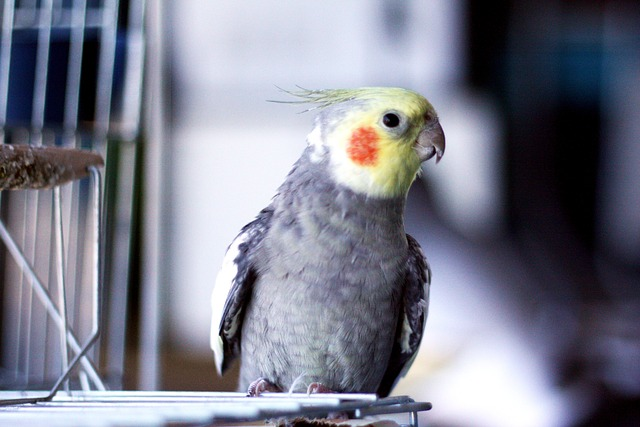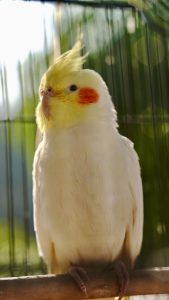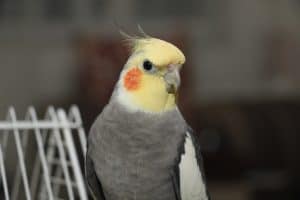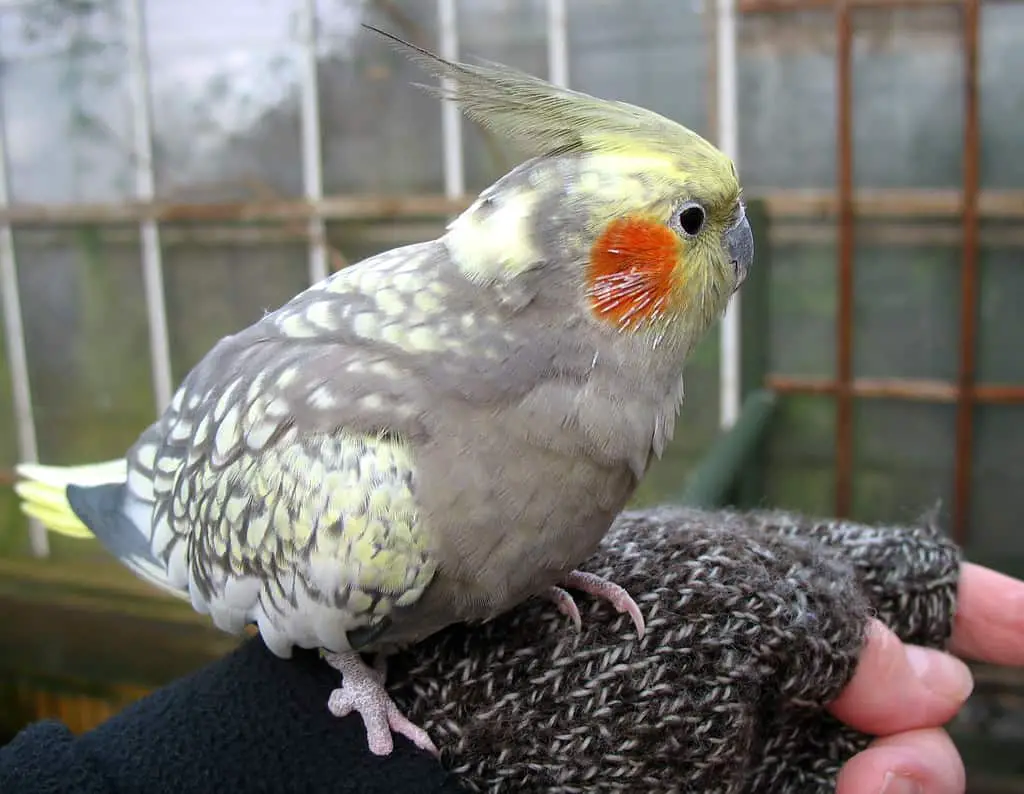Whether you’re welcoming a new bird into your home or trying to familiarize an older bird with its surroundings, one of the main goals of pet bird owners is knowing how to get a cockatiel to sit on your finger. Cockatiels, a popular pet bird species, often become a feathery friend when they can step up onto your finger, creating a strong bond between pet and owner and ultimately enriching the interaction and relationship.
Understanding the Basics

Initial Setup and Familiarization
Introducing a new cockatiel to your home requires patience and understanding. Start training by allowing your pet bird to get accustomed to its new environment. Place the cage in a quiet room, away from loud noises and disturbances. This will help your new bird feel safe and relaxed.
Gradually introduce your hand into the cage, keeping your hand steady and movements slow to avoid scaring your pet. Initially, rest your hand on the cage bars without trying to touch or move the bird. Practising this frequently will help your cockatiel slowly understand your hand as a non-threat.
Using Positive Reinforcement
Most birds respond positively to treats and positive reinforcement. Use this to your advantage during the training sessions. Once your bird is comfortable with your hand near the cage, start offering treats through the cage door, praising your cockatiel when it eats from your hand.
Starting the Training Process

Step Up Command
After the initial familiarization and positive reinforcement, begin working on the step up command. This command encourages cockatiels to step up onto your finger. Hold one finger (or a wooden dowel for a particularly untamed cockatiel) in front of your bird, just above its feet. Most cockatiels will instinctively step onto your extended finger to gain height.
At first, the bird may only step up with one foot. However, with regular training sessions, your cockatiel will start placing both of its feet onto your finger, becoming more comfortable with human interaction.
Building Trust
While the step up command is a fundamental part in training, building trust is equally important. Once your cockatiel can step up onto your finger, you can start moving it outside the cage, allowing it to fly and stretch its wings. When it’s time to return the cockatiel to its cage, use your finger as a perch – this encourages trust between you and your bird.
Why Won’t My Bird Go On My Finger?
There could be several reasons why your bird won’t perch on your finger.
1. Fear or unease – If your bird is new, it might still feel uncomfortable around you. It requires time to build trust.
2. Lack of training – If your bird isn’t used to your hand or being handled, it may resist perching on your finger.
3. Independence – Some birds have independent personalities and prefer not to be handled much.
4. Past trauma – If a bird has had a bad experience with hands before, like improper handling, it may be scared or hesitant.
5. Illness or discomfort – If your bird usually perches on your finger but suddenly stops, it may be feeling unwell or has a physical discomfort.
Remember, patience is key. Take the time to slowly earn your bird’s trust by spending time near their cage and talking softly to them. You can gradually start to introduce your hand into their cage, offering treats and showing them your hand is not threatening.
[lasso ref=”kaytee-spray-millet-treat-for-pet-birds-7-ounce” id=”1947″]

Tips and Warnings
It’s crucial to move slowly and with a gentle touch during the training process – sudden movements can scare your cockatiel, causing a setback in training. Remember to keep your training sessions short at first, gradually increasing the length as your bird becomes more familiar and comfortable.
Training an older bird or an untamed cockatiel may take longer when compared to training a new cockatiel who’s not had any previous experience. However, with patience and consistency, most cockatiels will eventually learn to sit on and move onto your hand.
Remember, getting a cockatiel to sit on your finger is not about dominance; it’s about establishing trust and respect with your feathered friend. With time, patience, and lots of treats, you’ll soon have your cockatiel perched happily on your finger, forming a unique bond only a pet and owner can share.
- How Can Your Other Pets Be Harmful To Your Cockatiel
- How Cockatiels Show Affection
- How Do Children Make Cockatiels As Pets
- How Do Cockatiels See
- How Do Cockatiels Sleep
- How Do Fumes Affect Your Cockatiel
- How Do You Care For Your Cockatiel Everyday
- How Do You Choose A Cage For Your Cockatiel
- How Do You Medicate Cockatiels
- How Do You Provide Your Cockatiel With Water
- How Do You Select Your Cockatiel
- How Do You Tame A Cockatiel
- How Does A Cockatiel Got Her Name
- How Far Can A Cockatiel Fly
- How Far Can A Cockatiel See
- How Fast Can Cockatiels Fly
- How Good Is A Cockatiels Memory
- How Long Can A Cockatiel Go Without Food
- How Long Can Cockatiels Go Without Water
- How Long Do Cockatiels Actually Live For In Captivity
- How Long Do Cockatiels Live In Captivity
- How Long Does It Take For Clipped Wings To Grow Back
- How Long Does It Take For Cockatiel Tail Feathers To Grow Back
- How Long Should A Cockatiel Be Out Of Its Cage
- How Often Do Cockatiels Lay Eggs
- How Often Do Cockatiels Poop
- How Often Should A Cockatiel Go To The Vet
- How Should I Set Up My Cockatiels Cage
- How To Bathe Your Cockatiel
- How To Bird Proof A Room
- How To Bond Two Cockatiels
- How To Bond With A Scared Cockatiel
- How To Build Trust With A New Cockatiel
- How To Calm A Stressed Cockatiel
- How To Care For Your Cockatiels Health
- How To Care For Your Cockatiels Nails
- How To Catch A Cockatiel
- How To Clean Cockatiel Nose
- How To Clip A Cockatiels Nails
- How To Discipline A Cockatiel
- How To Find A Cockatiel That Flew Away
- How To Get A Cockatiel Back Into Its Cage
- How To Get A Cockatiel To Go On Your Hand
- How To Get A Cockatiel To Like You
- How To Get A Cockatiel To Sit On Your Finger
- How To Give Your Cockatiel Exercise
- How To Grow Millet For Cockatiels
- How To Hold A Cockatiel
- How To Introduce A New Cockatiel To Another
- How To Keep A Cockatiel Quiet
- How To Keep A Cockatiel Warm 10 Tips And Tricks
- How To Maintain A Clean Cockatiel Cage
- How To Make Your New Cockatiel Feel At Home
- How To Manage Multiple Cockatiels In One Household
- How To Monitor Your Cockatiels Health
- How To Prepare Your Cockatiel For Travel
- How To Prevent Your Cockatiel From Becoming Stressed
- How To Recognize And Treat Cockatiel Anxiety
- How To Take Care Of An Older Cockatiel
- How To Tame A Cockatiel That Bites
- How To Tame Your Cockatiel
- How To Teach A Cockatiel To Talk
- How To Tell If A Cockatiel Is In Pain
- How To Tell The Age Of A Cockatiel
- How To Toilet Train Your Cockatiel
- How To Train A Cockatiel To Fly To You 8 Steps
- How To Train A Cockatiel To Poop In One Place
- How To Train Naughty Cockatiels
- How To Transition Your Cockatiel To A New Cage
- How To Transport A Cockatiel To The Vet
- How To Trim A Cockatiels Beak
- How To Trim Your Cockatiels Wings



